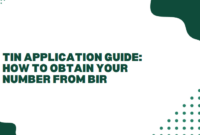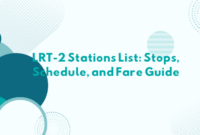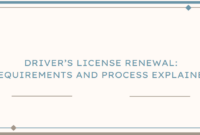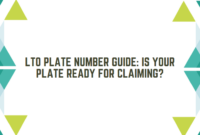Navigating Metro Manila’s congested roads can be a daily struggle for many motorists, especially during peak hours. To manage traffic and reduce the number of vehicles on the road, the government has implemented the Number Coding Rules, officially known as the Unified Vehicular Volume Reduction Program (UVVRP). These rules are designed to control traffic by limiting when private vehicles can travel based on the last digit of their license plate. The goal is to ease congestion during the busiest hours of the day, making commuting more bearable for everyone.
For private vehicle owners, understanding the Number Coding Rules is crucial to avoid penalties and ensure smooth travel across the metro. Different cities may have their own specific regulations or exemptions, such as Makati’s stricter enforcement without window hours. Staying informed about the coding schedule and knowing when you’re allowed to hit the road can save time, money, and hassle, helping you better navigate the complexities of Metro Manila’s traffic system.
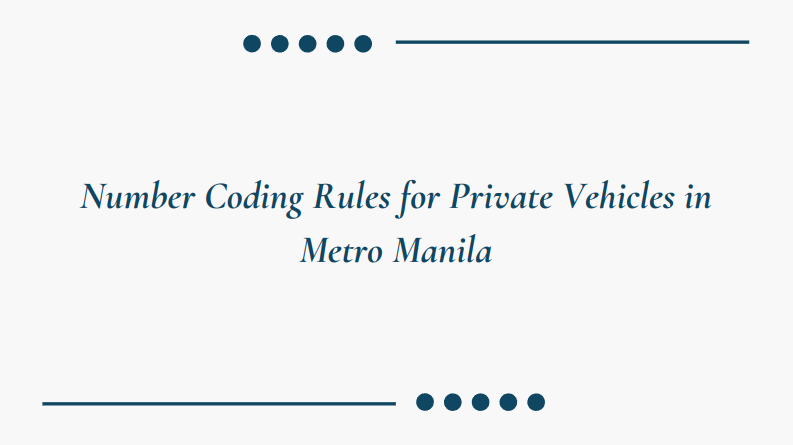
Driving around Metro Manila can feel like an overwhelming challenge, with traffic jams being as common as the sunrise. You can’t escape the sea of vehicles that floods the streets daily. For this reason, planning your trips carefully is essential, especially when considering the number coding scheme.
To avoid complications, always check if your vehicle is subject to coding before heading out. If you’re unsure about the most recent number coding regulations or the exact schedules, don’t worry-we’re here to guide you through it. Below is an updated overview of the number coding scheme in Metro Manila to help you navigate the city’s roads more efficiently.
Understanding Metro Manila’s Number Coding System
The number coding system, formally known as the Modified Unified Vehicular Volume Reduction Program (UVVRP), aims to control the volume of vehicles on the road to reduce traffic congestion. This program is implemented by the Metro Manila Development Authority (MMDA), and its purpose is to cut down traffic by about 20% during peak hours, helping to alleviate the burden on the roads.
The scheme primarily targets private vehicles. The restriction is based on the last digit of your vehicle’s license plate, determining which days you are prohibited from driving in Metro Manila. Knowing these details can help you avoid fines and unnecessary delays on your daily commutes.
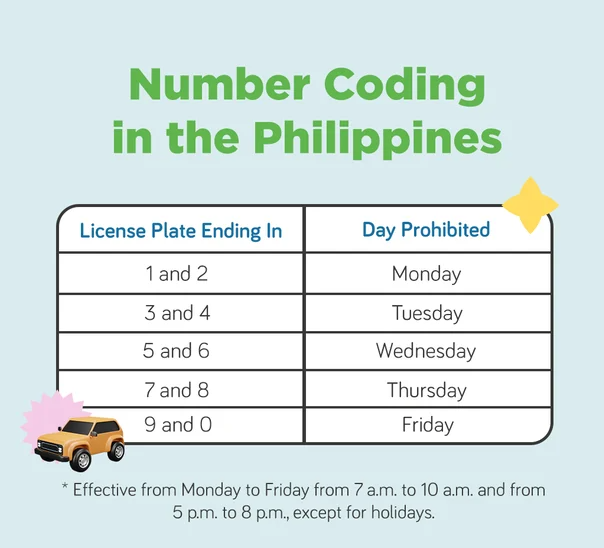
Number Coding Schedule and Exemptions
Goldpriceph.com – The number coding scheme, also known as the Unified Vehicular Volume Reduction Program (UVVRP), is implemented across the National Capital Region (NCR) to alleviate traffic congestion during peak hours. This scheme is in effect from Monday to Friday, targeting the busiest periods of the day, specifically from 7 a.m. to 10 a.m. and 5 p.m. to 8 p.m. On designated days, vehicles are prohibited from traveling on major roads like EDSA and C5 based on the last digit of their license plate. Fortunately, the coding scheme is lifted during weekends and public holidays, providing unrestricted travel during those times.
In Makati City, however, the local government enforces a more stringent version of the number coding scheme. Vehicles are restricted from 7 a.m. to 7 p.m., without any window hours, meaning motorists cannot drive their coded vehicles at any point during the day. This regulation applies to all major roads within the city, making it one of the most strictly regulated areas in Metro Manila in terms of traffic management.
Despite these strict measures, there are a few exemptions in place within Makati. Vehicles involved in medical emergencies are not subjected to the coding restrictions, and those carrying senior citizens with Blu Cards are also allowed to travel freely. Outside of these exceptions, vehicle owners must comply with the coding rules to avoid penalties, ensuring smoother traffic flow and less congestion in the city.
Roads and Areas Where Coding is Implemented
Number coding applies to all cities in Metro Manila under the MMDA’s jurisdiction, excluding some key locations like Makati. Some major roads included in the coding scheme are EDSA, South Luzon Expressway (SLEX), Roxas Boulevard, and Quezon Avenue, among others.
However, different cities within Metro Manila have their own variations of the coding scheme:
- Manila: Follows standard MMDA coding hours but has certain roads with no window hours.
- Pasay: Exempts roads like Sales Road and Airport Road from the coding.
- Taguig: Does not enforce coding within Bonifacio Global City (BGC), but it is applied on certain national roads.
- Quezon City: Allows travel during the window hours of 10 a.m. to 5 p.m., which are outside the standard coding times.
Each city may have additional local rules or secondary road restrictions, so it’s crucial to verify the coding regulations with local government units if you plan to drive through different areas.
Common Exemptions and Special Considerations
Some vehicles are automatically exempt from the number coding scheme. These include public utility vehicles (PUVs), motorcycles, ambulances, fire trucks, and those carrying essential goods. Additionally, hybrid and electric vehicles have partial exemptions, but it’s important to check whether your vehicle qualifies. Note that these exemptions do not apply in Makati, which has stricter rules.
Senior citizens in Makati who hold a Blu Card or are registered voters are exempt, and the MMDA is also considering expanding exemptions to cover seniors throughout Metro Manila.
Strategies for Navigating Coding Days
If your vehicle is covered by the number coding scheme, there are several ways to cope without breaking the rules. For instance, you can leave early in the morning to avoid restrictions or delay your trip until after the evening peak hours. Alternatively, booking a ride through transport apps, joining a carpool, or using public transportation are practical options. Biking or walking can also be ideal for short distances, provided it’s a safe option for your commute.
Conclusion
The number coding scheme, also known as the Unified Vehicular Volume Reduction Program (UVVRP), is a traffic management system implemented to reduce vehicle congestion in Metro Manila. This program limits the number of private vehicles on the road during peak hours based on the last digit of their license plates. Vehicles with plate numbers ending in specific digits are prohibited from driving on designated days, with coding enforced during rush hours, typically from 7 a.m. to 10 a.m. and 5 p.m. to 8 p.m., Monday through Friday. The goal is to alleviate traffic on major thoroughfares, such as EDSA and C5, during the busiest parts of the day.
Although the number coding scheme applies across all Metro Manila cities, there are certain exemptions and variations depending on the area. For instance, Makati City enforces stricter rules with no window hours, while other cities offer exemptions for public utility vehicles, motorcycles, and vehicles carrying essential goods. It is important for motorists to stay informed about their city’s specific coding rules to avoid penalties and ensure smooth travel.
